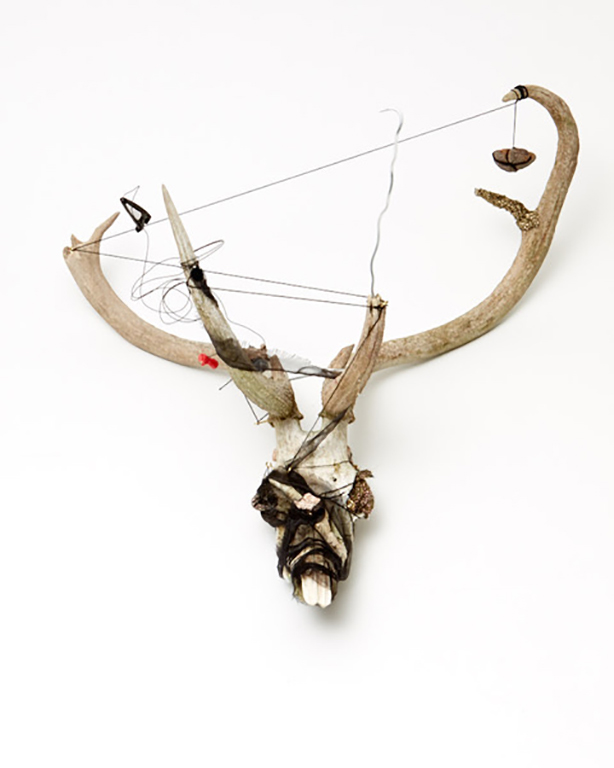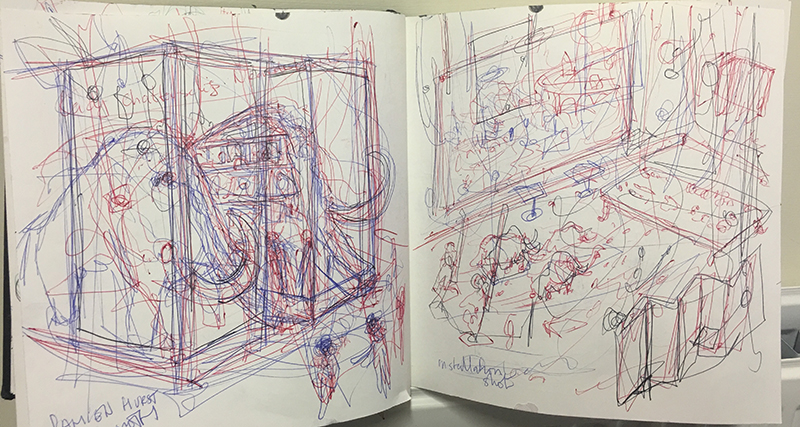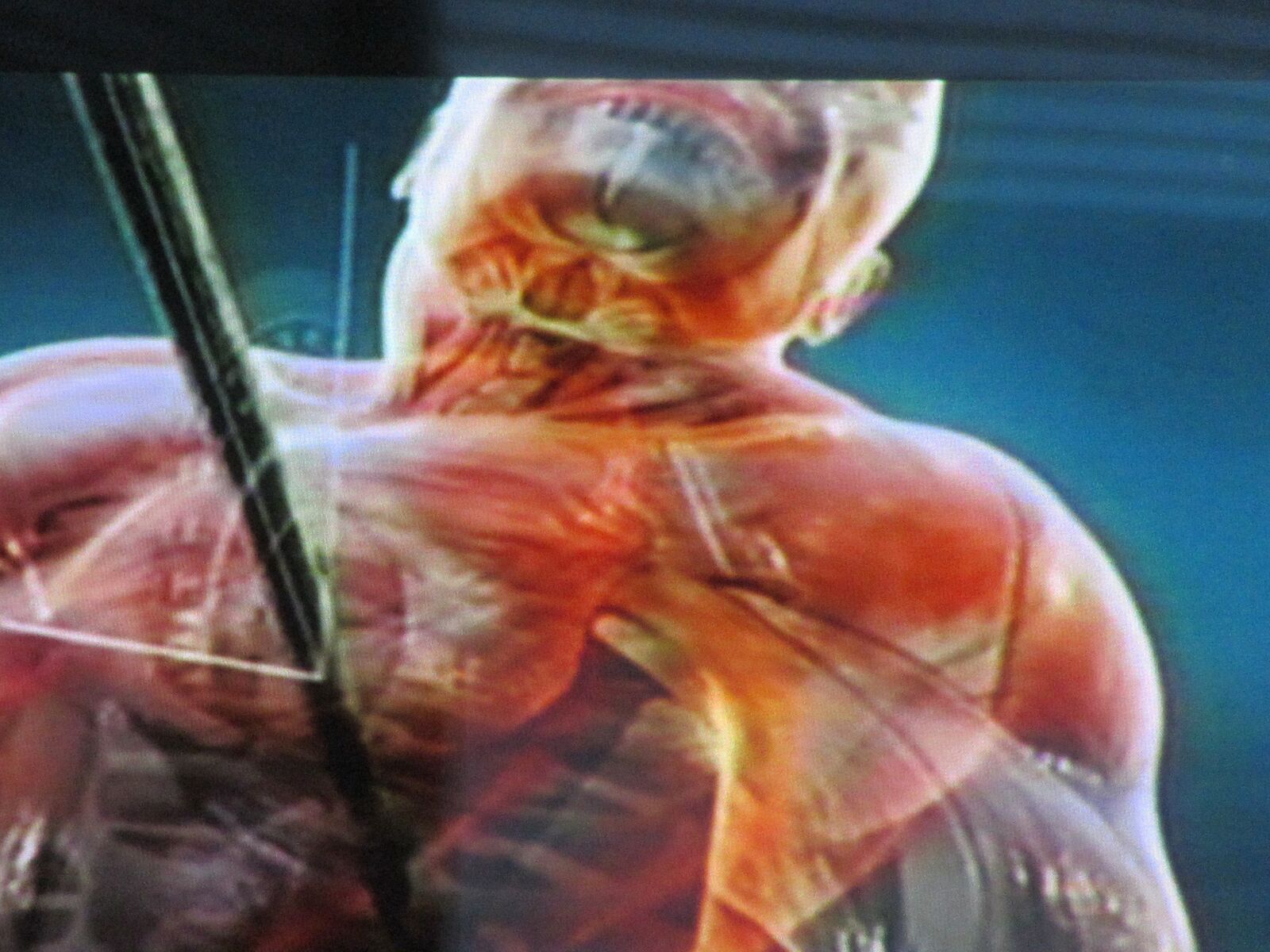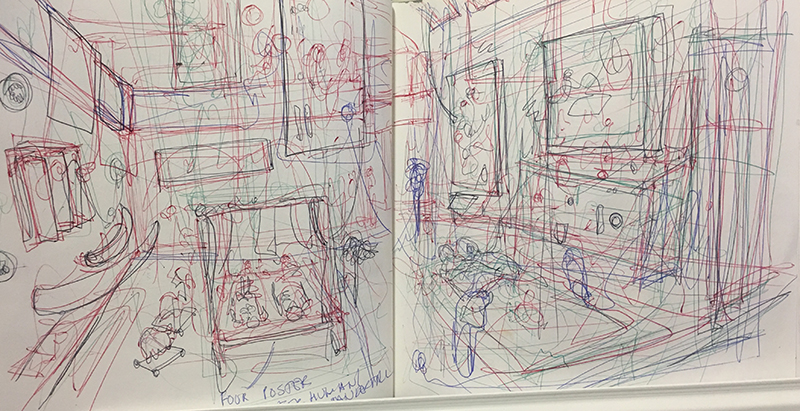Format
A series of 3-D animals and creatures, artefacts, apparatus, artificial and natural phenomena would be constructed and displayed in floor models and cases, or suspended from the ceiling. For example, a life-sized juvenile mammoth in armature wire with a few strands of ‘fur’ made of reddish coloured steel wool will be constructed, modelled on a real Soviet laboratory photograph of a Siberian mammoth whose body was flattened out from the weight of the permafrost in which it was found.
The Neo-Neanderthal exhibition proposed here mixes material and ideational culture – the visible/physical with the intangible/ invisible. The imagined worlds of the Neanderthals, past, present and future, are embodied in the drawings and objects. In the course of this art making, it is quite possible that the material culture will be not just expressive, not just reflective, but also actively changing and re-shaping our own ideational culture.
Finally, both artists feel that a strong audio element should feature in the exhibition, not just to accompany the visual material or as part of animations, but to provide another sensory or experiential way of thinking about the issues raised. When asked in an interview whether Neanderthals had language, Svante Paabo, the world’s leading researcher on ancient DNA, said “One is so tempted to speculate, …So I try to resist it by refusing questions such as ‘Do I think they would have spoken?’ Because honestly, I don’t know, and in some sense you can speculate with just as much justification as I can” (Kolbert 2011:72). Paabo and his colleagues are best known for announcing in 2010 that Neanderthals had interbred with humans. Bushe and Cannizzo, as artists, can speculate about Neanderthal communication systems, following some of the thoughts provided by Steven Mithen in his book The Singing Neanderthals. Based on the anatomy and physiology of their skulls, he suggests they used some form of ‘hummmmm’ (holistic, manipulative, multi-modal, musical and mimetic 2005:221) or even singing to maintain complex social relationships over the 200,000 years they survived. The notion of such ‘hummmmming’ or singing is a compelling concept and one we will explore by researching and inventing likely sounds, music and songs which might have bound together Neanderthal culture.




